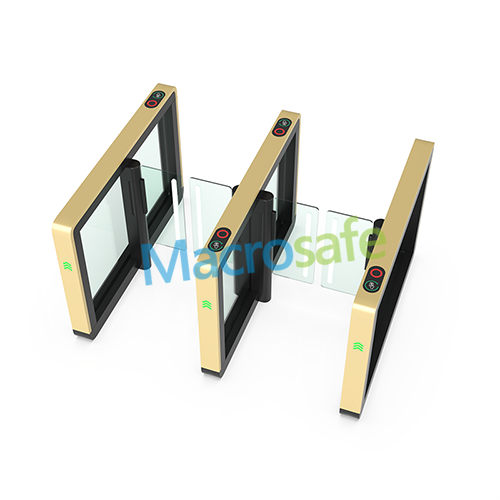
Handicap turnstiles play a crucial role in creating an inclusive and accessible environment for individuals with disabilities. These turnstiles are designed to address accessibility challenges and improve the overall user experience for people with diverse mobility needs. In this article, we will explore the ways in which handicap turnstiles are enhancing accessibility and overcoming barriers to provide a seamless experience for all users.
1. Wide Passage Width and Clearances
One of the primary challenges individuals with disabilities face when using traditional turnstiles is navigating through narrow passages. Handicap turnstiles address this challenge by providing wider passage widths and enhanced clearances. These design features accommodate individuals using wheelchairs, walkers, or other mobility aids, ensuring smooth and barrier-free access through the turnstile.
2. Height Adjustability
Not all individuals with disabilities have the same height or mobility level. Handicap turnstiles incorporate height adjustability to cater to users of varying heights. This feature enables individuals to customize the height of the turnstile for comfortable access, whether they are seated in a wheelchair or require additional support while passing through.
3. Assistive Technology Compatibility
Handicap turnstiles are designed to be compatible with various types of assistive technology. These technologies, such as voice input devices, sip and puff systems, or joystick controls, enable individuals with limited mobility or dexterity to interact with the turnstile effectively. By supporting assistive technology, handicap turnstiles ensure that all users can independently access the facilities.
4. Obstacle Detection and Safety Sensors
Safety is a critical aspect of handicap turnstile design. These turnstiles are equipped with obstacle detection sensors that prevent the barriers from closing on individuals or objects in the passage area. The sensors detect any obstructions and automatically stop or reverse the turnstile movement, ensuring the safety of the users. This feature enhances user confidence and eliminates the risk of accidents or injuries.
5. Clear Visual and Auditory Indicators
Handicap turnstiles incorporate clear visual and auditory indicators to guide individuals with visual or hearing impairments. Visual indicators, such as high-contrast signage, LED lights, or symbols, provide clear directions and information. Auditory indicators, including voice instructions or beeps, assist individuals with hearing impairments, ensuring they can navigate the turnstile safely and independently.
6. Accessibility Signage and Braille Labels
To enhance accessibility for individuals with visual impairments, handicap turnstiles feature prominently displayed signage and braille labels. These labels provide clear instructions and information in braille, allowing individuals with visual impairments to operate the turnstile with confidence and autonomy. The inclusion of braille labels ensures equitable access for all users.
7. Touchless and Contactless Entry Options
Handicap turnstile are increasingly integrating touchless and contactless entry options to improve accessibility and hygiene. Technologies such as proximity cards, mobile devices, or biometrics allow individuals to gain access without any physical contact. This feature is particularly beneficial for individuals with limited dexterity or mobility who may struggle with traditional manual interaction.
8. Intuitive User Interfaces
Handicap turnstile prioritize user-friendly interfaces to ensure a smooth user experience. Intuitive interfaces feature clear instructions, well-organized displays, and user-friendly controls, reducing confusion or mistakes during the entry process. User-friendly interfaces help individuals with disabilities navigate the turnstile seamlessly and independently.
Conclusion
Handicap turnstiles play a vital role in addressing accessibility challenges and improving the user experience for individuals with disabilities. Through wider passage widths, height adjustability, compatibility with assistive technology, obstacle detection sensors, clear visual and auditory indicators, accessibility signage, touchless entry options, and intuitive interfaces, these turnstiles ensure equal access and enhance independence. By incorporating these features, handicap turnstiles create a more inclusive and accessible environment, empowering individuals with disabilities to navigate public spaces with ease and dignity.
MORE READ ABOUT: SPERO MAGAZINE




